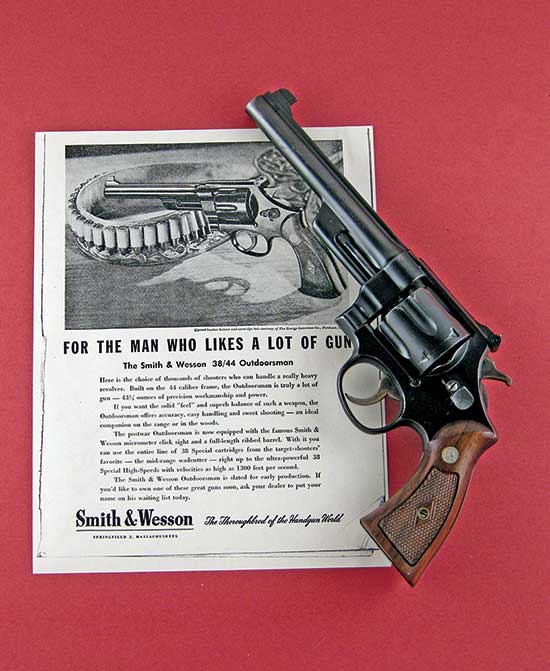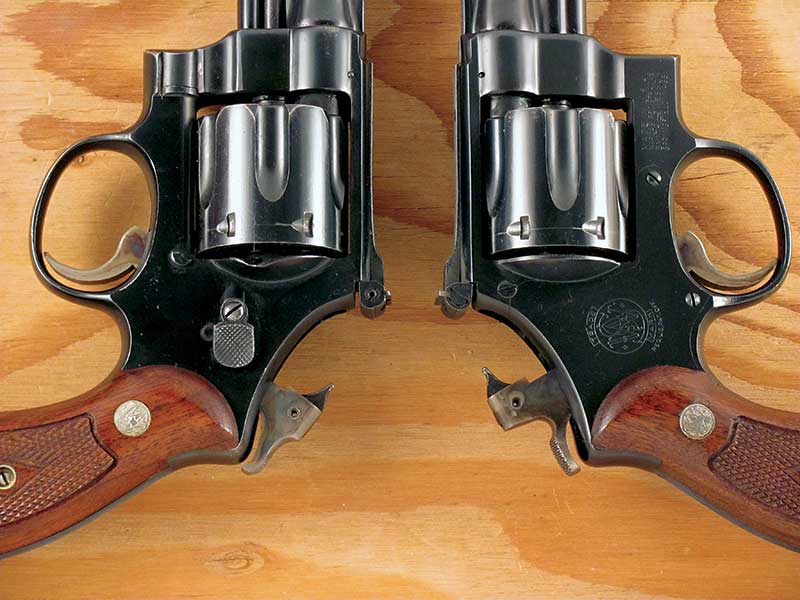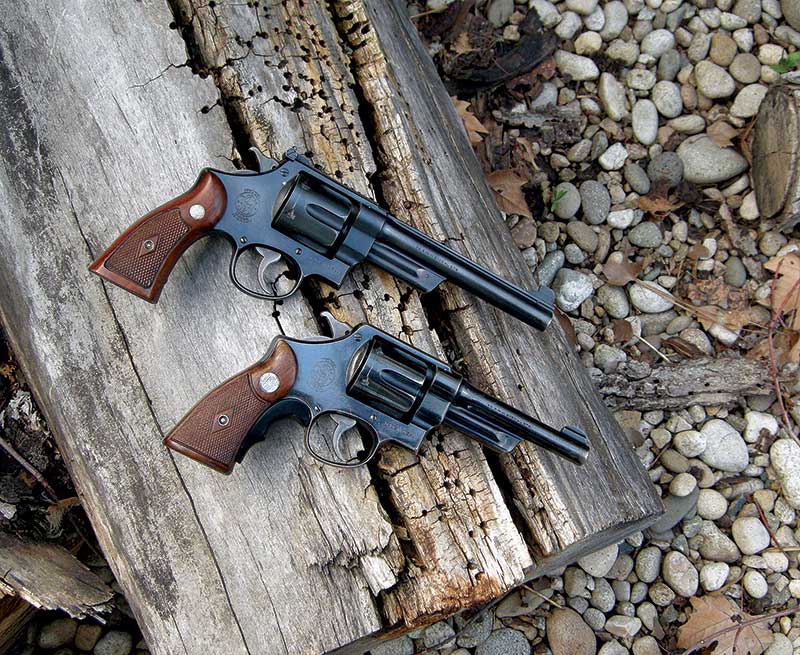v
Of course, manufacturing of the Heavy Duty and Outdoorsman ended with the beginning of World War II, however production resumed in 1946 with approximately 2,500 of each being produced, until they became the Model of 1950. The old long action disappeared with the new models which became the Models 20 and 23 respectively in 1957, when all Smith & Wessons lost their wonderful names and became numbers. Both models were removed from production in 1966.
In Major D.B. Wesson’s 1932 book called Burning Powder, we have one of the first reports on the then new .38/44s.
This particular section was written by US Navy Captain James Baldwin: “For over a quarter of a century there has been a demand for a handgun of unusual abilities, one which at 100, 200 or even 500 yards could, if necessary, in lieu of a rifle being handy, down a large animal, or be used to kill such an animal at close quarters, when the rifle had failed to kill at long ranges. It was also demanded that this handgun be a target gun of unusual accuracy and also one for personal protection, and even if heavy, so perfectly balanced that its weight would not be felt above that of a gun used solely as a protective weapon, and carried in the waistband or holster.”
I don’t know about using the .38/44 on large animals at any range!








